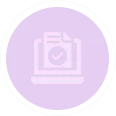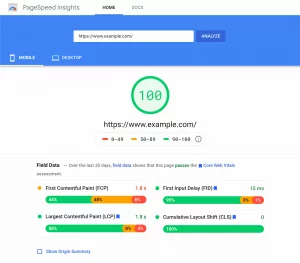In the digital age, the integration of social media functionalities into websites is no longer a luxury—it’s a necessity. Social media integration helps enhance user experience, simplifies navigation, and provides various methods for streamlining user registration and login processes. Among the many social media platforms, Facebook is widely recognized as one of the most user-friendly and trusted login systems available. By incorporating Facebook Login into your PHP website, you allow users to sign in with just a few clicks, bypassing the often tedious process of creating and remembering new passwords.
In this guide, we will walk you through the entire process of integrating Facebook Login into your PHP website, ensuring a smooth, user-friendly experience while bolstering your site’s credibility and trustworthiness.
Benefits of Integrating Facebook Login with PHP
1. Simplified User Registration and Login
Facebook Login reduces friction for users by eliminating the need to complete lengthy registration forms or create new passwords. By simply signing in with their existing Facebook credentials, users gain quick access to your website. This ease of access boosts user sign-ups and encourages repeat visits, improving overall user engagement.
2. Access to Valuable User Data
When users log in via Facebook, you can access a wealth of useful data, including their name, email address, and profile picture. This information allows you to personalize the user experience, enhancing their interaction with your website. Furthermore, it reduces the need for users to manually input details, speeding up the registration process.
3. Increased User Engagement and Retention
Personalized experiences are key to driving user engagement. With Facebook’s data, such as displaying a user’s name and photo on your website, you can create an engaging and interactive environment. This customization not only enriches the user experience but also encourages visitors to return, increasing retention rates.
4. Enhanced Website Security
Integrating Facebook Login strengthens website security. Facebook’s robust authentication system, which includes features like two-factor authentication and continuous security updates, ensures that users’ personal data is safeguarded. By relying on Facebook’s secure login processes, you can provide a safer browsing experience for your users.
5. Building Trust and Credibility
Websites that offer social login options, particularly from trusted platforms like Facebook, are perceived as more secure and reliable. This builds trust among users, encouraging them to share personal information and engage with your platform more confidently. Social logins also help ensure that users feel secure while interacting with your site.
A Step-by-Step Guide to Adding Facebook Login to Your PHP Site
A. Creating a Facebook App for Your Website
The first step in integrating Facebook Login with your PHP website is creating a Facebook app. This app will serve as the bridge between your website and Facebook’s services. Follow these steps to create your Facebook app:
- Log in to Your Facebook Account
- Navigate to the Facebook Developers Portal and log in using your Facebook account credentials.
- Access ‘My Apps’
- From the top navigation menu of the Facebook Developer Portal, click on the “My Apps” button.
- Create a New App
- Click on the “Create App” button. Facebook will prompt you to choose an app type (e.g., Consumer, Business, Gaming, etc.). Select the one that best fits your website’s needs.
- Set App Details
- Provide a unique name for your app, select a category, and, if required, provide your contact email address. Click the “Create App” button to finalize the setup.
B. Obtaining the App ID and Secret Key
To seamlessly integrate Facebook Login with your PHP website, you need to use the official Facebook SDK for PHP. Here’s how to install and configure the SDK:
- Download the SDK
- Visit the Facebook PHP SDK GitHub repository and download the latest release.
- Extract the ZIP File
- Extract the downloaded ZIP file to a location within your PHP project directory where you can easily access it.
- Include the SDK in Your PHP Script
- To include the SDK in your PHP script, use the
require_oncestatement to load the autoload file from the SDK folder:
- To include the SDK in your PHP script, use the
require_once ‘/path/to/facebook-php-sdk/autoload.php’;
Ensure that the path to the SDK is correct based on your project’s folder structure.
C. Installing the Facebook SDK for PHP
To seamlessly integrate the process, we will use the official Facebook SDK for PHP. Follow these steps to install the SDK:
- Download the Facebook PHP SDK from the official GitHub repository (https://github.com/facebook/php-graph-sdk).
- Extract the downloaded ZIP file to a location accessible by your PHP project.
- Include the autoload.php file from the SDK in your PHP script using the following code:
require_once ‘/path/to/facebook-php-sdk/autoload.php’;
D. Setting Up Facebook Login with a PHP Website
Now that the Facebook PHP SDK is installed, you can begin setting up the Facebook Login functionality on your PHP website.
- Initialize the Facebook SDK
- In the PHP file where you want to integrate Facebook Login, initialize the Facebook SDK by adding the following code. You will need to insert your App ID and App Secret here:
$fb = new \Facebook\Facebook([
‘app_id’ => ‘your-app-id’,
‘app_secret’ => ‘your-app-secret’,
‘default_graph_version’ => ‘v12.0’,
]);
E. Customizing the Facebook Login Button
You can customize the appearance of the Facebook Login button to match your website’s design. Follow these steps:
- Wrap the Facebook Login button code with a div element and provide a unique ID:
<div id=”fb-login-button”>
<a href=”<?php echo $fb->getRedirectLoginHelper()->getLoginUrl(‘https://your-website.com/fb-callback.php’, [’email’]); ?>”>Login with Facebook</a>
Replace 'https://your-website.com/fb-callback.php' with the actual URL of your callback script, where users will be redirected after logging in.
F. Handling the Facebook Login Response
After the user clicks the Facebook Login button, they will be redirected to the callback URL where you will handle the authentication process and retrieve their access token.
- Create a Callback Script
- Create a PHP file (e.g.,
fb-callback.php) to handle the response from Facebook after user authentication.
- Create a PHP file (e.g.,
- Retrieve the Access Token
- In the callback script, add the following code to retrieve the user’s access token:
$helper = $fb->getRedirectLoginHelper();
$accessToken = $helper->getAccessToken();
The access token is essential for making API calls to Facebook to retrieve user data.
G. Retrieving User Data from Facebook
Once you have the access token, you can use it to request user data such as their name and email address. This data can be used to create a user profile or log the user in.
- Request User Profile Data
- Add the following code to your
fb-callback.phpscript to retrieve the user’s profile data:
- Add the following code to your
try {
$response = $fb->get('/me?fields=name,email', $accessToken);
$user = $response->getGraphUser();
$name = $user->getName();
$email = $user->getEmail();
} catch (\Facebook\Exceptions\FacebookResponseException $e) {
// Handle API errors
} catch (\Facebook\Exceptions\FacebookSDKException $e) {
// Handle SDK errors
}
This code will retrieve the user’s name and email, which can be used to create a new user account or log them into your website.
H. Implementing Facebook User Logout
Providing a way for users to log out of your site and Facebook is important for security and user experience. To log the user out, you can create a logout functionality:
- Create the Logout Script
- Create a new PHP file (e.g.,
logout.php) to manage the logout process.
- Create a new PHP file (e.g.,
- Log the User Out
- Add the following code to the
logout.phpscript:
- Add the following code to the
$helper = $fb->getRedirectLoginHelper();
$logoutUrl = $helper->getLogoutUrl($accessToken, 'https://your-website.com');
header('Location: ' . $logoutUrl);
exit();
This will log the user out from Facebook and redirect them to the homepage of your website.
I. Customizing the Facebook Login Button
To ensure the Facebook Login button blends seamlessly with your website’s design, you can customize its appearance:
- Wrap the Button in a
div- Use a
<div>to wrap the Facebook Login button and apply a unique ID:
- Use a
<div id="fb-login-button">
<a href="<?php echo $fb->getRedirectLoginHelper()->getLoginUrl('https://your-website.com/fb-callback.php', ['email']); ?>">Login with Facebook</a>
</div>
- Apply Custom CSS
- Use CSS to style the login button as per your website’s design guidelines:
#fb-login-button a {
/* Custom button styles */
background-color: #3b5998;
color: #fff;
padding: 10px 20px;
border-radius: 5px;
text-decoration: none;
}
Learn how to fix Facebook images here.
Create a Smarter User Registration Process with Facebook Login on PHP Websites
In conclusion, integrating Facebook Login into your PHP website not only simplifies the user login process but also enhances user engagement, security, and credibility. By offering a seamless experience, you can make it easier for users to access your site, while gaining valuable insights into their profiles to personalize their journey.
Don’t miss out on the opportunity to boost your website’s performance and user satisfaction. Sign up for a free trial with Nestify Hosting today! Enjoy reliable and fast hosting, plus all the tools you need to easily implement Facebook Login and more. Start building a better website now!
Troubleshooting and FAQs to Maximize User Convenience
Why am I getting an “Invalid App ID” error?
Make sure the App ID is entered correctly in your PHP code. Check again for any mistakes or missing characters.
How can I retrieve additional user information, such as profile picture or birthday?
Modify the ‘fields’ parameter in the API request to include the desired fields. For example:
$response = $fb->get(‘/me?fields=name,email,picture,birthday’, $accessToken);
Can I use Facebook Login on multiple pages of my PHP website?
Yes, you can add the Facebook Login with a PHP Website button to multiple pages. Just make sure to handle the login response and retrieve user information accordingly.
Can I customize the permissions requested during Facebook Login?
The scope parameter in the login URL can be changed to request more permissions, yes. For instance, here is how to ask for the ‘user_friends’ permission:
$loginUrl = $helper->getLoginUrl(‘https://your-website.com/fb-callback.php’, [’email’, ‘user_friends’]);



